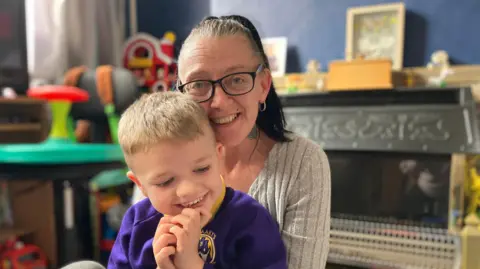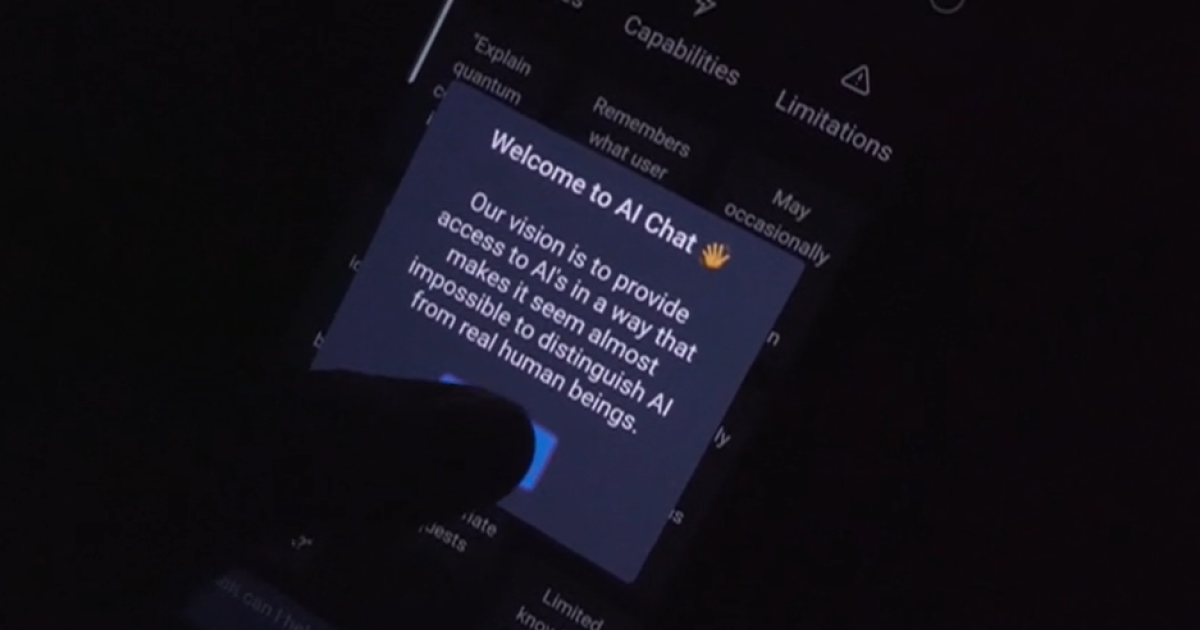Education
AI in the classroom – the upending of traditional education

On a recent episode of the New York Times’ Hard Fork podcast, I was startled to hear about an “AI-first” school that has used AI to reduce academic teaching time to a mere two hours per day and has redeployed teachers to be mentors and guides, rather than deliverers of content, policing, and grading.
What happens after the two-hour academic class? Lots of fun, apparently – collaboration games, motivation exercises, and life skills activities. The school boasted that students are scoring in the 99th percentile nationally for its core curriculum. Oh, and no homework. Ever.
We’ll get back to the veracity of these claims in a moment. Most of the discussion about AI and students has been around the use of GenAI to circumvent the hard work of doing homework and essays and reading, by passing that job over to a chatbot, which generally does fine work on their behalf – at least if you are a student looking to shirk responsibilities and don’t object to a bit of plagiarism.
Schools and teachers, unsurprisingly, were rather irritated by this and instituted various fightback campaigns ranging from threats to AI bans to punishments to technology-based chatbot plagiarism detectors (the latter now generally agreed to be hopelessly inadequate).
Some educators are now realising that this is all a waste of time. Students are going to use GenAI wherever they can: at school, at home, in the bathroom. One current study has 63% of US high-school students using AI in ways that they know contradict school policy. There is no way to stop it, and it is becoming apparent that perhaps it should be encouraged within carefully designed guardrails.
And so a new crop of education initiatives is blooming where the AI designs the course plan, does the teaching, the monitoring, the personalised assistance, the remedial support (where appropriate), as well as the evaluations and grading. This leaves the teacher free to concentrate on softer skills like coaching and mentorship, making the school a more joyous and expansive experience for both students and teachers.
How is it going? The school I mentioned earlier is Alpha Schools, which now operates three campuses in the US. It is one of the better-known AI-first ventures. Its model is mixed-age microschools using adaptive platforms so students “learn 2x in 2 hours,” then spend afternoons on projects, mentorship, and life skills.
Deliberately disruptive
The idea is deliberately disruptive – take the tedium out of repetitive content acquisition and give time back for exploration. Independent observers and critics are understandably sceptical of headline ratios such as “2 times faster” learning; some commentators have flagged that such claims need careful scrutiny and peer-reviewed evidence.
In the podcast co-founder MacKenzie Price enthusiastically proclaims:
“We practise what’s called the Pomodoro Technique. So, kids are basically doing like 25 minutes of focused attention in the core academics of maths, reading, language, and science. They get breaks in between, and then by lunchtime, academics are done for the day and it’s time to do other things.
“So in the afternoon is where it gets really exciting because when kids don’t have to sit at a classroom desk all day long, just grinding through academics, we instead use that time for project-based, collaborative life-skills projects. These are workshops that are led by our teachers – we call them guides – and they’re learning skills like entrepreneurship and financial literacy and leadership and teamwork and communication and socialisation skills.”
There has been some grumbling about her claims. They are self-reported numbers, and a couple of parents have been critical. Also, the school is not cheap, so the results would certainly show some selection bias. On the other hand, they do not reject children with poor academic track records, which is more than can be said for other private schools.
Pushed the conversation
Still, places like Alpha have pushed the conversation from “can we use AI in classrooms?” to “how radically should we reorganise the school day around it?” – and that question is exactly the kind of policy and practice debate we need.
There are other schools too, like the private David Game College in London, currently piloting an AI-first teaching curriculum for 16-year-olds, which looks very similar to Alpha Schools, with similar sterling results. But there are only 16 students in the pilot, so the jury remains out.
What about the public-school system? Is AI just for the rich? Turns out, no. There is an impressive case study in Putnam County Public Schools in Tennessee. Facing a severe shortage of computer science teachers, the school district partnered with an AI platform called Kira Learning.
What happened next was a true testament to the power of a good hybrid model: 1,200 students enrolled, and every single one of them passed the course – which would be remarkable in any subject, let alone computer science. This wasn’t “AI-first” in the Alpha School sense. It was “AI-for-all,” a tool that levelled the playing field and brought a vital skill to students who might otherwise have missed out. The teachers weren’t replaced; they became “facilitators,” freeing them from grading and lesson planning to focus on student engagement.
It is not only students that benefit. Consider AcademIQ in India, an AI-powered educational application designed to revolutionise the learning experience for teachers, students, and parents, particularly in multilingual and low-resource classrooms. Launched in 2023, the platform is India’s first to be built around the National Education Policy (NEP) 2020.
Simplicity
The platform’s primary appeal lies in its simplicity. It offers over 150 AI tools, most notably an “instant NEP-aligned lesson plan generator” that requires no prompts or technical expertise. Teachers simply select a class, subject, and topic to receive a complete lesson plan in seconds. This is a direct response to a major pain point for educators; testimonials indicate the platform can reduce weekly lesson-planning time by several hours, freeing up teachers to focus on student engagement.
What then of pedagogy – the art and science of teaching? Universities, which have a long heritage in teacher training, are notoriously slow to change curricula. If it is true that everything except the interpersonal roles of mentorship, coaching, and guidance will be outsourced to much more efficient AI teachers, what then should be the requirements of a teaching degree or certificate? It is not clear that anyone has wrestled with this question sufficiently, particularly given AI’s dizzying rate of improvement.
For those teachers terrified of these coming changes, but resigned to the imminent primacy of AI tutors, there is this comfort – no more lesson plans, no more grading, no more one-size-fits-all. Just the nobler task of shaping the critical human traits of motivation, confidence, enthusiasm, collaboration, and childhood curiosity.
That sounds much more satisfying than the old way.
[Image: Photo by Element5 Digital on Unsplash]
The views of the writer are not necessarily the views of the Daily Friend or the IRR.
If you like what you have just read, support the Daily Friend
Education
More school-starters missing key skills like toilet training, teachers say

Kate McGoughEducation reporter, BBC News
 Getty Images
Getty ImagesSchools are “picking up the pieces” as more children start reception without key skills such as speaking in full sentences or using the toilet independently, teaching unions have told the BBC.
A third of teachers have at least five children in their school’s reception class who need help with going to the toilet, a survey of more than 1,000 primary school teachers in England suggests.
Nine in 10 who responded to the Teacher Tapp survey had seen a decrease in speech and language abilities among new starters over the past two years.
The government previously announced a target for 75% of children to be at a good level of development on leaving reception by 2028.
At St Mary’s Church of England Primary School in Stoke, speech and language therapist Liz Parkes is helping reception pupil Gracie sound out words that rhyme.
Liz comes to the school once a week to do one-to-one interventions like this, and to offer training and support to teachers on how to spot issues.
Around a quarter of pupils at St Mary’s need some extra support with speech and language when they join reception, but with Liz’s help that number is down to just a handful of pupils by Year 2.
Liz says social isolation is partly the reason for the decrease in communication skills.
“Children are increasingly spending a lot of time looking at a screen and not necessarily engaged in more meaningful interactions or developing the kind of listening skills you need when you hit nursery and reception.
“We’re seeing children in reception who haven’t experienced having conversations on a regular basis or aren’t having a range of experiences where they’re exposed to language.”
 BBC/Kate McGough
BBC/Kate McGoughTeacher Tapp, a survey tool, asked primary school teachers in England about school readiness a week into term. In results seen exclusively by BBC News, they found:
- 85% of 1,132 respondents said they had at least one reception pupil who needed help going to the toilet
- 33% have at least five children needing help, while 8% had at least 10
- 92% reported a decrease in speech and language abilities among reception starters over the past two years.
A Department for Education spokesperson said that the government was working to ensure that a record share of children are “school-ready” at the age of five, “turning the tide on inherited challenges of lack of access to high-quality early education, and helping teachers focus on teaching so every child in the class can achieve and thrive”.
The spokesperson added that the government had already increased access to early years care for hundreds of thousands of families and was investing £1.5bn to “rebuild early years services”.
 BBC/Kate McGough
BBC/Kate McGoughCatherine Miah, deputy head at St Mary’s Church of England Primary School in Stoke, encouraged schools to budget for a speech and language therapist, who could have an “incredible” impact on children.
“We’ve had to make sacrifices elsewhere, but if children aren’t ready to learn you could sit them in front of the best phonics lessons in the world, they’re not going to take it onboard if they’ve not got those learning behaviours.”
The school says a third of its pupils need help with toilet training when they join nursery, but the school works with parents to ensure they are toilet-trained by the time they reach reception.
“We’re a team. It’s not a case of saying to parents ‘This is your job. Why haven’t you done it?’ We need to work together.”
The government has set a target that 75% of children leaving reception at five years old will have a “good level of development” by 2028. Last year 68% of children were at that level, so an extra 45,000 children a year are needed to reach that goal.
To achieve a “good” level of development, a child is assessed by teachers at the end of their reception year on tasks including dressing, going to the toilet, and paying attention in class.
Pepe Di’Iasio, of the Association of School and College Leaders, said reception teachers were “brilliant” at supporting young children but local services have been badly eroded over the past decade.
“It has left schools picking up the pieces,” he said. “Many children are starting school already several months behind their peers.”
Parenting charity Kindred Squared found that teachers are spending 2.5 hours a day helping children who haven’t hit developmental milestones instead of teaching.
They have written a set of guidelines for parents to check whether their child has the skills they need to begin school.
The Department for Education was approached for comment.
 BBC/Kate McGough
BBC/Kate McGoughDiane’s son has just started Year 1 at St Mary’s in Stoke this year. She says without the school’s support he would have been much further behind in his development.
“Within two weeks he was out of nappies,” said Diane. “They would help him on the toilet here and I’d do it at home, we’d work together.”
Teachers say her boy is thriving, but Diane says the school has been instrumental in supporting his special educational needs and improving his speech and language.
“He does a lot for himself, whereas before he was always dependent on me. School have helped me to help him become more independent and more confident,” she said.
Additional reporting by Emily Doughty
Education
Kentucky schools, healthcare embrace AI despite mixed reactions

(LEX 18) — Artificial intelligence is reshaping how local organizations operate, from classrooms in Irvine to healthcare facilities in Lexington, as professionals navigate both the opportunities and challenges of this rapidly evolving technology.
Lisa Blue, who researches AI’s impact on workforce development, delivers six to eight speaking engagements per month discussing AI policy and implementation. She encounters varied student experiences with the technology.
“AI is going to change how we work before it changes who works,” Blue said.
Blue works to shift perceptions about AI in education, particularly addressing misconceptions from K-12 settings.
“We do have students coming in from K through 12, who have been told AI is straight up cheating and it’s bad don’t use it and I’m really trying to change that narrative,” Blue said.
At Estill County Area Technology Center in Irvine, students continue integrating AI into their studies. Allyson Banks, who works at the school, describes the technology’s dual nature.
“It is fantastic and terrifying at the same time,” Banks said.
The school’s programs align well with AI applications, according to Banks.
“We have robotics, manufacturing, a lot of different things that pair really well with AI,” Banks said.
For computer science teacher Zach Bennett, AI offers significant efficiency gains.
“Using AI, you can create things in half the time that it would normally cost,” Bennett said.
Healthcare transformation on the horizon
In Lexington’s healthcare sector, CEO, Dr. Stephen Behnke at Lexington Clinic sees AI as a transformative force, though still in early stages.
“I’d say we’re in the early innings of this,” Behnke said.
Behnke anticipates fundamental changes across the healthcare industry.
“I think that AI is going to fundamentally transform healthcare. I think that the power of the tools today is pretty early,” Behnke said.
Looking ahead operationally, Behnke predicts significant changes within the next decade.
“There’s almost no way that by 2030 2035 healthcare doesn’t look profoundly different,” Behnke said.
A market size and forecast report from Grand View Research supports Behnke’s projections, showing substantial growth in healthcare AI spending. The report projects that $187 billion will be spent on healthcare AI alone by 2030, representing a significant jump from 2024 market size.
The research highlights AI’s expanding role across multiple sectors, from education and manufacturing to healthcare, as organizations adapt to integrate these tools into their operations while addressing concerns about implementation and workforce impact.
As for jobs of the future and how they connect with AI?
Dr. Blue at EKU and Banks at Estill County ATC addressed that question:
“Any kind of job where it’s hands-on so we’re talking like healthcare, advanced manufacturing, logistics, construction, agriculture, they’re all adding AI enhanced jobs right now. So, they’re not really being threatened by it, they’re being enhanced by AI capabilities,” Blue said.
“I don’t think it’s necessarily gonna replace as many humans as it’s going to make us better at our jobs, or at least faster at our jobs,” Banks added.
Education
Daystar University and MindHYVE.ai Launch AI-Powered Higher Education Transformation in Kenya
NAIROBI, Kenya and NEWPORT BEACH, Calif, Sept. 11, 2025 /PRNewswire/ — Daystar University, one of Kenya’s premier private Christian liberal arts institutions, and MindHYVE.ai, Inc., a global innovator in artificial intelligence, have entered into a landmark partnership to embed ArthurAI™, MindHYVE’s agentic AI learning platform, across Daystar’s academic ecosystem.
This partnership positions Daystar as one of the first universities in East Africa to implement a comprehensive AI-powered learning environment at scale — directly addressing the needs of Kenya’s over 500,000 higher education students, many of whom face challenges of access, personalization, and outcomes.
ArthurAI by the Numbers: Transforming Learning and Teaching
ArthurAI has already demonstrated significant measurable impact in academic environments:
- 80% reduction in curriculum preparation time – allowing faculty to shift focus from administrative tasks to mentorship, research, and innovation.
- Adaptive learning pathways – dynamically tailoring coursework to each student’s cognitive profile, learning style, and pace.
- Predictive analytics for student success – enabling early identification of at-risk learners and targeted interventions that raise completion and retention rates.
- Multilingual delivery in 10+ languages – critical in Kenya’s diverse linguistic landscape, ensuring inclusivity and accessibility.
- Mobile-first and offline capability – extending Daystar’s reach beyond classrooms, supporting equitable access even in bandwidth-limited environments.
“ArthurAI will not only enhance our classrooms — it will redefine them,” said Professor Martha Kiarie, Dean of the School of Science, Engineering and Health at Daystar University. “By leveraging adaptive intelligence, we can ensure every student is supported according to their unique learning needs. This is how we prepare our graduates to thrive in an AI-enabled global economy.”
Bill Faruki, CEO & Founder of MindHYVE.ai, added:
“ArthurAI isn’t a theory — it’s a proven system already delivering measurable gains. Partnering with Daystar allows us to show how Africa’s universities can leapfrog legacy systems and lead the world in responsible, scalable AI education.”
The rollout begins this semester across selected departments and will progressively expand to reach Daystar’s entire academic community. Quarterly reviews will measure student engagement, faculty adoption, and institutional outcomes — ensuring continuous improvement and maximum impact.
About Daystar University
Daystar University is a private Christian liberal arts university with campuses in Nairobi and Athi River. Chartered in 1994, Daystar is known for shaping servant-leaders equipped to transform society through faith-driven excellence.
About MindHYVE.ai
MindHYVE.ai™ is redefining the boundaries of intelligence by engineering autonomous systems and deploying domain-specific AGI agents across real-world sectors. Powered by the Ava-Fusion™ large reasoning model and architected for agent coordination, swarm intelligence, and adaptive autonomy, MindHYVE’s technology stack is revolutionizing law, medicine, finance, education, and governance.
With operations in North America, Asia, and now soon in Africa, MindHYVE.ai™ is on a mission to democratize access to transformative intelligence and architect the infrastructure for post-scarcity economies. Backed by HYVE Labs, the company continues to shape the future of agentic systems on a global scale.
Website: www.mindhyve.ai | Email: [email protected] | Contact: +1 (949) 200-8668
Media Contacts
Marc Ortiz
Email: [email protected]
Photo – https://mma.prnewswire.com/media/2771408/MindHYVE_ai_x_Daystar.jpg
Logo – https://mma.prnewswire.com/media/2730797/MindHYVE_ai_Logo_MindHYVE_ai_SQ_Logo.jpg

-

 Business2 weeks ago
Business2 weeks agoThe Guardian view on Trump and the Fed: independence is no substitute for accountability | Editorial
-
Tools & Platforms1 month ago
Building Trust in Military AI Starts with Opening the Black Box – War on the Rocks
-

 Ethics & Policy2 months ago
Ethics & Policy2 months agoSDAIA Supports Saudi Arabia’s Leadership in Shaping Global AI Ethics, Policy, and Research – وكالة الأنباء السعودية
-

 Events & Conferences4 months ago
Events & Conferences4 months agoJourney to 1000 models: Scaling Instagram’s recommendation system
-

 Jobs & Careers2 months ago
Jobs & Careers2 months agoMumbai-based Perplexity Alternative Has 60k+ Users Without Funding
-

 Podcasts & Talks2 months ago
Podcasts & Talks2 months agoHappy 4th of July! 🎆 Made with Veo 3 in Gemini
-

 Education2 months ago
Education2 months agoVEX Robotics launches AI-powered classroom robotics system
-

 Education2 months ago
Education2 months agoMacron says UK and France have duty to tackle illegal migration ‘with humanity, solidarity and firmness’ – UK politics live | Politics
-

 Funding & Business2 months ago
Funding & Business2 months agoKayak and Expedia race to build AI travel agents that turn social posts into itineraries
-

 Podcasts & Talks2 months ago
Podcasts & Talks2 months agoOpenAI 🤝 @teamganassi


